The Unique Train Ride Which Earns You 10 Passport Stamps
It’s always fun to travel internationally by train and to receive some new passport stamps while crossing a border. But have you ever been on a single train between two countries in which your passport is stamped a whopping 10 times?
Thanks to some geographical and historical quirks, this is exactly what is happening when you travel the 172 kilometres between Chernivtsi in Ukraine and Ocnita in Moldova by train.

A bit of history
This unique railway line starts in Chernivtsi, a historical university city in the Bukovina region of southern Ukraine. Although nowadays most people will probably not have heard about this city before, Chernivtsi was always a historically significant place.
A melting pot of Ukrainians, Germans, Jews, Romanians, Poles and Russians, Chernivtsi was always a multicultural city, especially during its heydays when it was part of the Habsburg Empire.
Under Austro-Hungarian rule, the city was known under its German name of Czernowitz. Romanians know it as Cernăuți, and in Russian railway timetables you will see the city listed as Chernovtsy (Черновцы).
I will stick to the Ukrainian version of Chernivtsi as it’s most commonly used these days!
Little Vienna
Chernivtsi is a delightful city to visit as it has a surprisingly pleasant old town. It is no surprise that the city was once known as the Vienna of the East or Little Vienna when it was still under Austrian rule (from 1775 until 1918).
Thanks to its large Jewish population, Chernivtsi also earned the nickname of “Jerusalem on the Prut”, the Prut being the river which streams through the city.
In fact, in 1930 most inhabitants were Jewish (26.8 percent), followed by 23.3% Romanians, 20.8% Germans and 18.6% Ukrainians.
Sadly, little is remaining of Jewish life in the city after the Holocaust. Less than a third survived World War II and most of the survivors later fled the Soviet Union for Israel or the US.
In 1918, Chernivtsi was handed over to the Kingdom of Romania following the defeat of the Austro-Hungarian Empire in World War I.
After World War II, the region of Northern Bukovina and thus Chernivtsi, were again transferred to a new country, this time to the victorious Soviet Union.
When the USSR broke up, the city became part of an independent Ukraine.

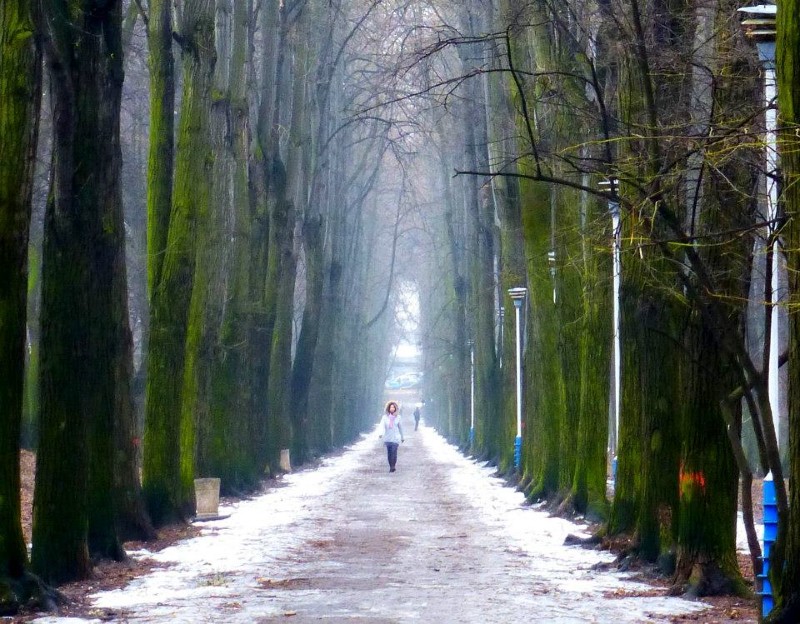


Architecture
However, you can still see the wonderful heritage of the city in its magnificent architecture. The lovely building complex in which Chernivtsi University is housed is even listed as an UNESCO World Heritage site.
In the city centre, you can easily see some great examples of Fin de Siècle architecture such as Vienna Secession, Art Nouveau and Renaissance Revival.

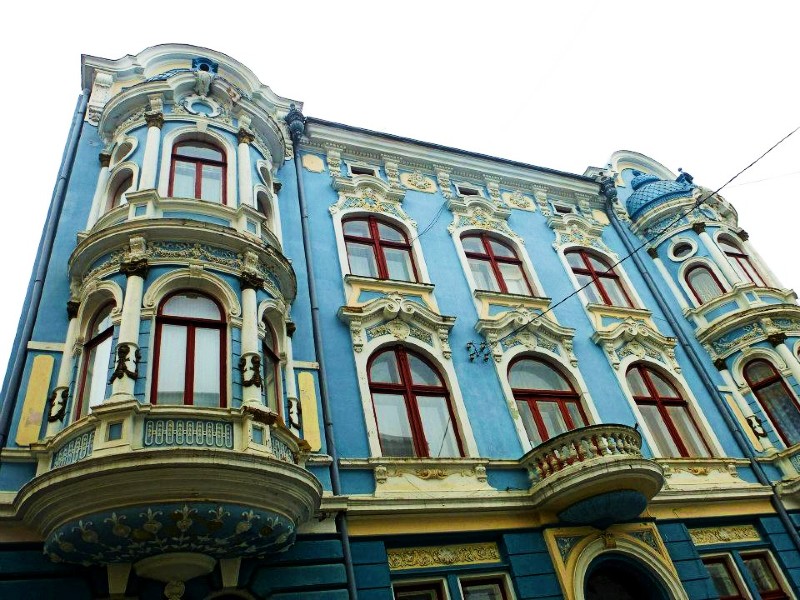

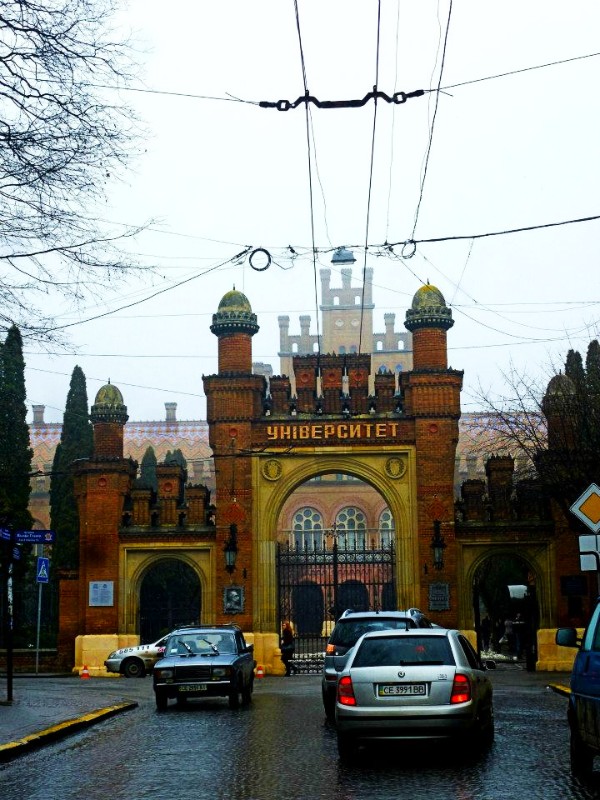



Trains
These pictures are all from a trip to Ukraine, Moldova and Romania which I took in March 2013 (hence the fact that some are not the best ever quality).
From Chernivtsi, my goal was to make it in a day to the Moldovan capital of Chișinău.
After a fun day exploring Chernivtsi, I woke up early in the morning to some fresh snowfall on this late winter day. It was an absolute joy to walk the short distance from the city centre to the railway station, another architectural delight.
For the journey to Chisinau, I first had to take a local train from Chernivtsi to Ocnita in Northern Moldova, where I had to change for the inter-regional train to Chisinau.
On paper, everything seemed to be extremely straightforward. Little did I know back then how long the journey would actually take due to geography, history and some quirky borders.
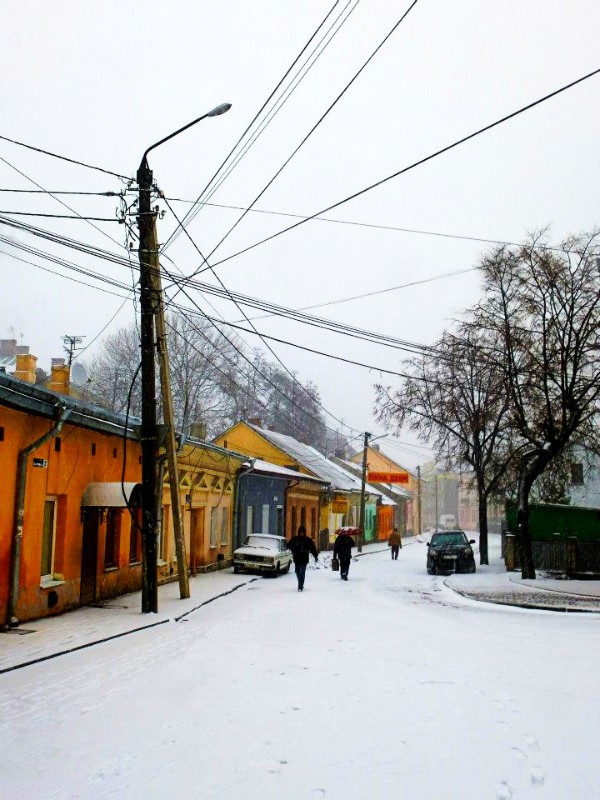


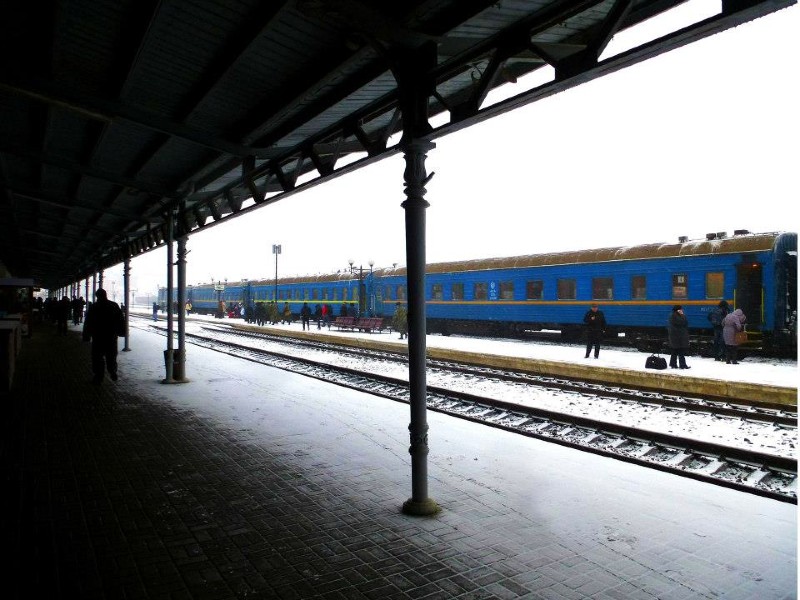
Changing borders
The first part of the railway line from Chernivtsi to Novoselytsya was originally constructed in 1884 by the Habsburgs (or to be precise, by a local company called Bukowinaer Lokalbahnen in German).
Back then the town of Novoselytsya, located on the River Prut, was the border between the Habsburg Empire and Tsarist Russia, located on the other riverbank.
In turn, the Russian built a broad gauge railway from Novoselytsya to Ocnița (Russian: Óкница, pronounced Oknitza in both languages) and on to Bălți (Russian: Бельцы or Beltzy), thus connecting the two countries.
In those years of the late 19th Century, both Ocnița and Bălți were located within the Russian Empire and thus firmly within the boundaries of one nation.
Travelling from Chernivtsi to Ocnița thus meant crossing the border only once: between Austria and Russia at Nowosielitza-Novoselytsya.
In Soviet times after World War II, the entire line from Chernivtsi to Ocnița was fully within the territory of the USSR and thus a domestic railway journey.
Sure, it crossed the borders between the Ukrainian SSR and Moldovan SSR a few times, but given that both were Soviet satellite states it did not constitute any international borders but was more akin to travelling between different administrative regions.
This however changed massively after the break-up of the Soviet Union when the Ukrainian SSR and Moldovan SSR became the independent nations of Ukraine and Moldova.
Suddenly, the 172 km (107 miles) long railway line between Chernivtsi and Ocnita crossed the international border a total of five times! You can see this clearly on the map below.

Wooden benches
I had absolute no idea about this when I boarded the train at Chernivtsi’s station. The Ukrainian train with its trademark blue exterior only has hard wooden benches as seats.
It’s called ‘Obshchi’ in Russian and basically constitutes fourth class seating (if you see Spalny Vagon or SV as 1st class, Kupe as 2nd class and Platzkart as 3rd class).
Fortunately, the train wasn’t too crowded with people, although given the sub-zero temperatures both outside and inside the carriage I wouldn’t have minded being surrounded by fat babushkas this time around for a bit of warmth.
Besides the ice cold temperatures inside the train, the wooden benches were also extremely uncomfortable. I however saw it as part of the fun and the unique experience, and all was soon forgotten as we trundled eastwards.
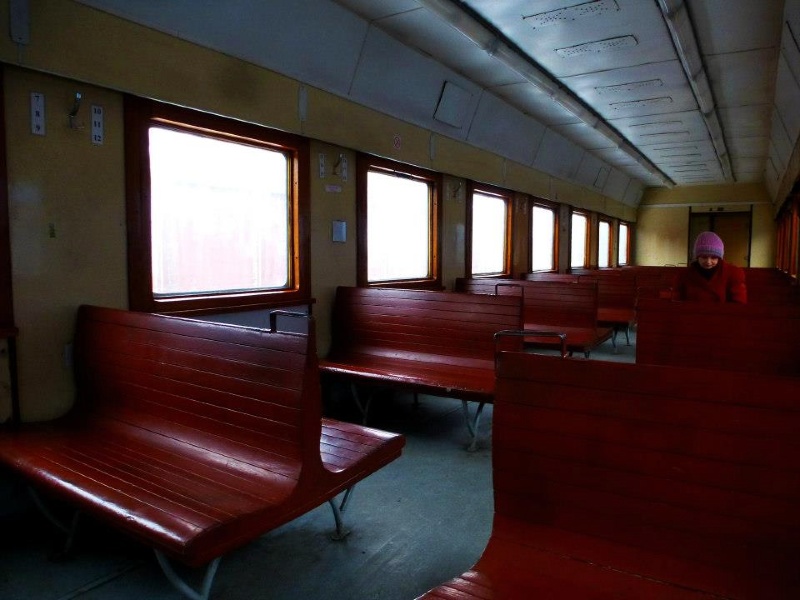
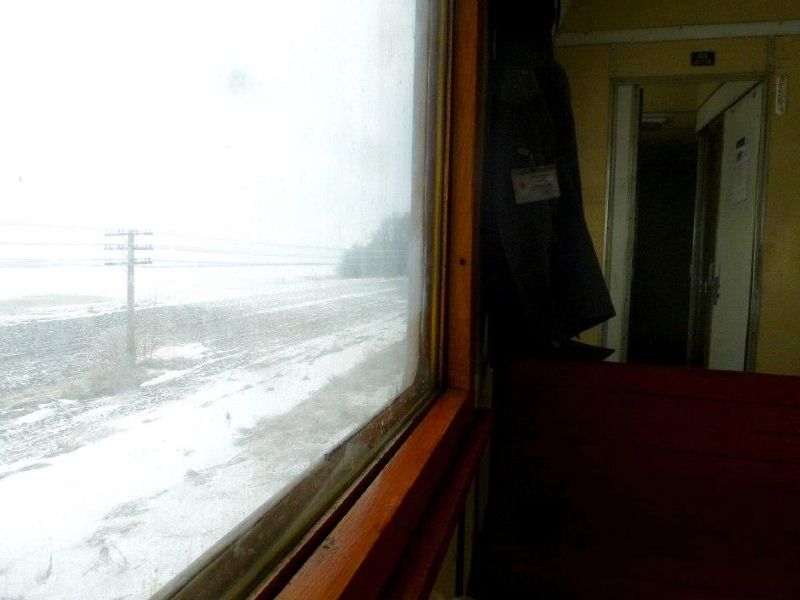
Passport stamps
Crossing five borders means a total of 10 passport checks – and this is the main reason why the train journey of 172 kilometres takes a couple of hours.
At some borders, first the Ukrainian border guards will go through the train followed by their Moldovan colleagues – all during the same stop.
However, sometimes the Ukrainian border post and the Moldovan border post are a few hundred feet or even miles apart, and the train has to make two stops to cross the border.
Of course, five borders means five times a passport check by the Ukrainians and five times by the Moldovans.
On this train journey, you thus collect a total of 10 passport stamps, as the Ukrainians and Moldovans both stamp your passports upon entry and exit from the country.
Never did I collect so many passport stamps in such a short time!
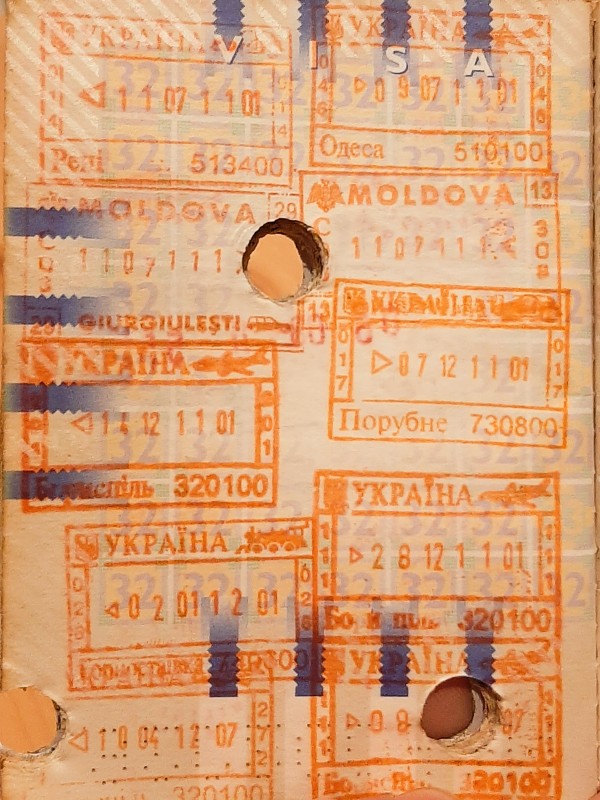
Moldova
The train journey between Chernivtsi and Ocnita isn’t particularly scenic, especially not in the bleak winter months.
From the window I saw mostly endless fields, a few towns, and a couple of beech forests for which Bukovina is famous.
At Ocnita, I had a short connection to make to Chisinau. Back at the station in Chernivtsi, I could only buy a ticket as far as Ocnita, which meant that I still had to buy an Ocnita to Chisinau ticket once in Moldova.
Unfortunately, the woman behind the ticket counter at Ocnita station didn’t accept any Ukrainian hryvna, US dollars or bank cards, which meant I had to run around the station in search of some exchange kiosks.
I managed to find one on the street right next to the pedestrian railway overpass. As I had lost so much time in the process, I had to run back to the ticket office to quickly buy my ticket for the interregional train to Chisinau which was already waiting for departure at the platform.
Luckily, I made it onto the train, and was pleasantly surprised to find a warm and modern carriage which even had power sockets and WiFi internet. That was really not something I expected after the wooden-bench train from Chernivtsi!
The Ocnita to Chisinau train takes a couple of hours and is another slow journey, although the views over the rolling hills of Moldova aren’t too bad.
The train makes a few stops en route, of which Balti and Ungheni are the two most important stations.
My train rolled into Chisinau well after sunset.
After a good night of sleep, I was happy to see clear blue skies and some early spring sunshine the next morning for my visit to Moldova’s capital.
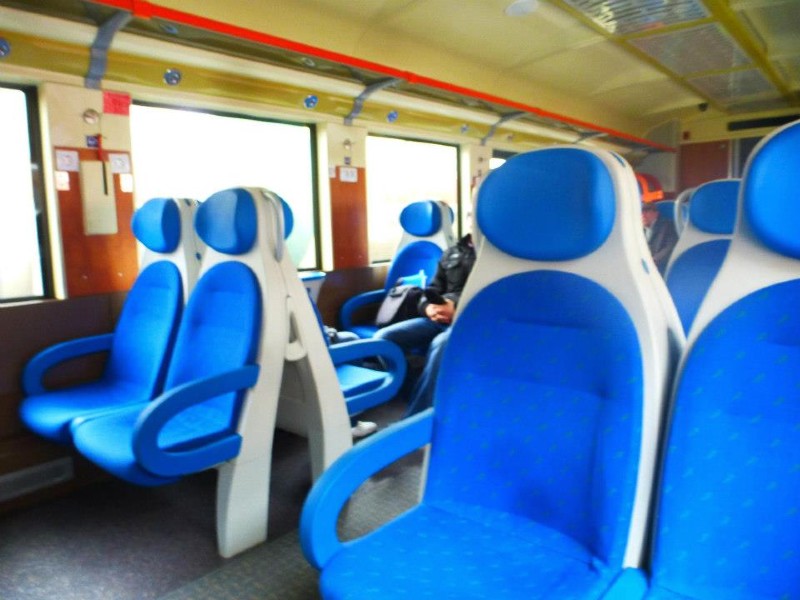

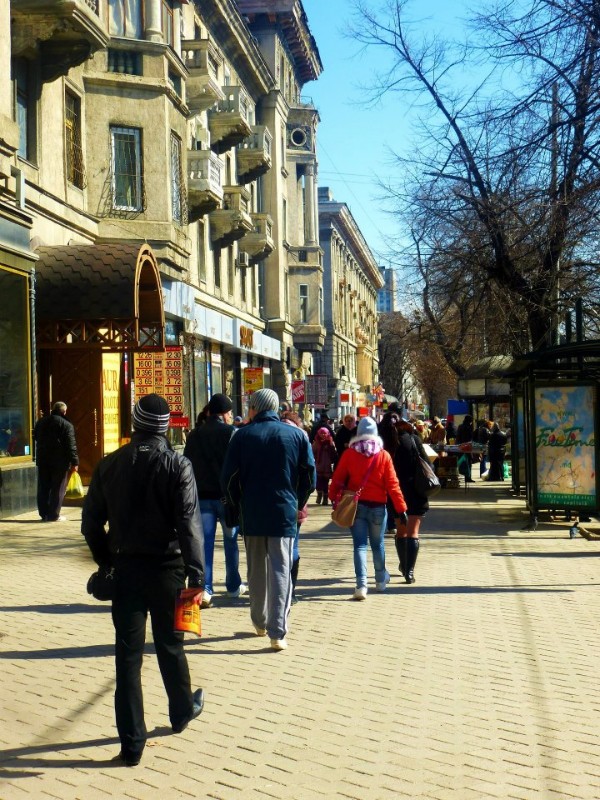

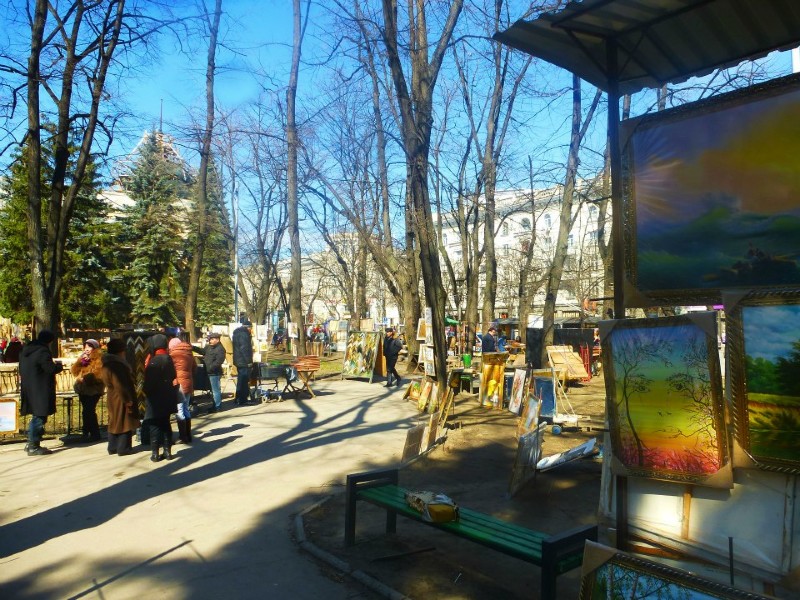


The future of the Chernivtsi-Ocnita line
My journey between Chernivtsi, Ocnita and Chisinau took place quite some years ago (2013 to be precise).
Unfortunately, Moldova’s Railways will cease running passenger trains from 12th February onward as the national railway company CFM has massive debts after years of mismanagement.
Although the company may be restructured and revived in the near future and passenger trains might run again in Moldova, it is all too early to tell at this stage.
The train between Chernivtsi and Ocnita was operated by the Ukrainian Railways and not the CFM, so I’m also not sure how CFM’s financial problems might affect traffic on the Ocnita branch line to Chernivtsi.
If it would really be the end of all regional train services between Ocnita and Chisinau, there might still be alternatives, as Ocnita is also a stop for many international long-distance trains between Chisinau and cities across Ukraine and Russia such as Kiev and Moscow.
Let’s see what the future will hold for this unique branch line between Ukraine and Moldova!
Leave us a comment..!
Would you like to take this unique train between Chernivtsi and Ocnita?
Or did you perhaps travel on a train journey where you can collect an even larger number of stamps in your passport? Let us know in the comments!
Explore some other destinations with us!
In our trip report section, we have written multiple reports of holidays across the world which can serve as an inspiration for your next trip. These trip reports include destination guides as well as reviews of hotels, airlines and other modes of transport.
Our previous featured destinations highlighted the cities of Lund in Sweden and Arad in Romania.
At Paliparan, we also regularly publish amazing flight deals and special ticket sales, so make sure to regularly check the flight deals section on our website.
Or subscribe to our Facebook, Twitter and Instagram pages in order to receive instant updates when a new article or flight deal is out!


A wery nice report rfom Ukraine and Moldavia which remind me of my own trips in younger days.
As ever, a brilliant report Koen, I’ll add it to the list of places to go.